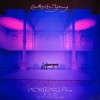| 国家: | 美国 |
| 期间: | Minimalism |
传记
La Monte Thornton Young (born October 14, 1935) is an American avant-garde composer, musician, and artist generally recognized as the first minimalist composer.[1][2][3] His works are cited as notable examples of post-war experimental and contemporary music, and were tied to New York's downtown music and Fluxus art scenes.[4] Initially inspired by sources such as Indian classical music, serialism, and jazz,[3][5] Young is perhaps best known for his pioneering work in Western drone music (originally referred to as "dream music"), prominently explored in the 1960s with the experimental music collective Theatre of Eternal Music. He has engaged in musical and multimedia collaborations with a wide range of artists, including Tony Conrad, John Cale, Terry Riley, and most frequently the visual artist Marian Zazeela, with whom he developed the Dream House sound and light installation.[3]
Young's work often calls into question the nature and definition of music.[6] Despite having released very little recorded material throughout his career—much of it currently out of print[7]—Vulture described him as the most influential living composer today.[2] The Observer wrote that his work has had "an utterly profound effect on the last half-century of music."[8] His evolving composition The Well-Tuned Piano, first conceived in 1964, has been characterized as "one of the great achievements of 20th-century music" by The Guardian.







